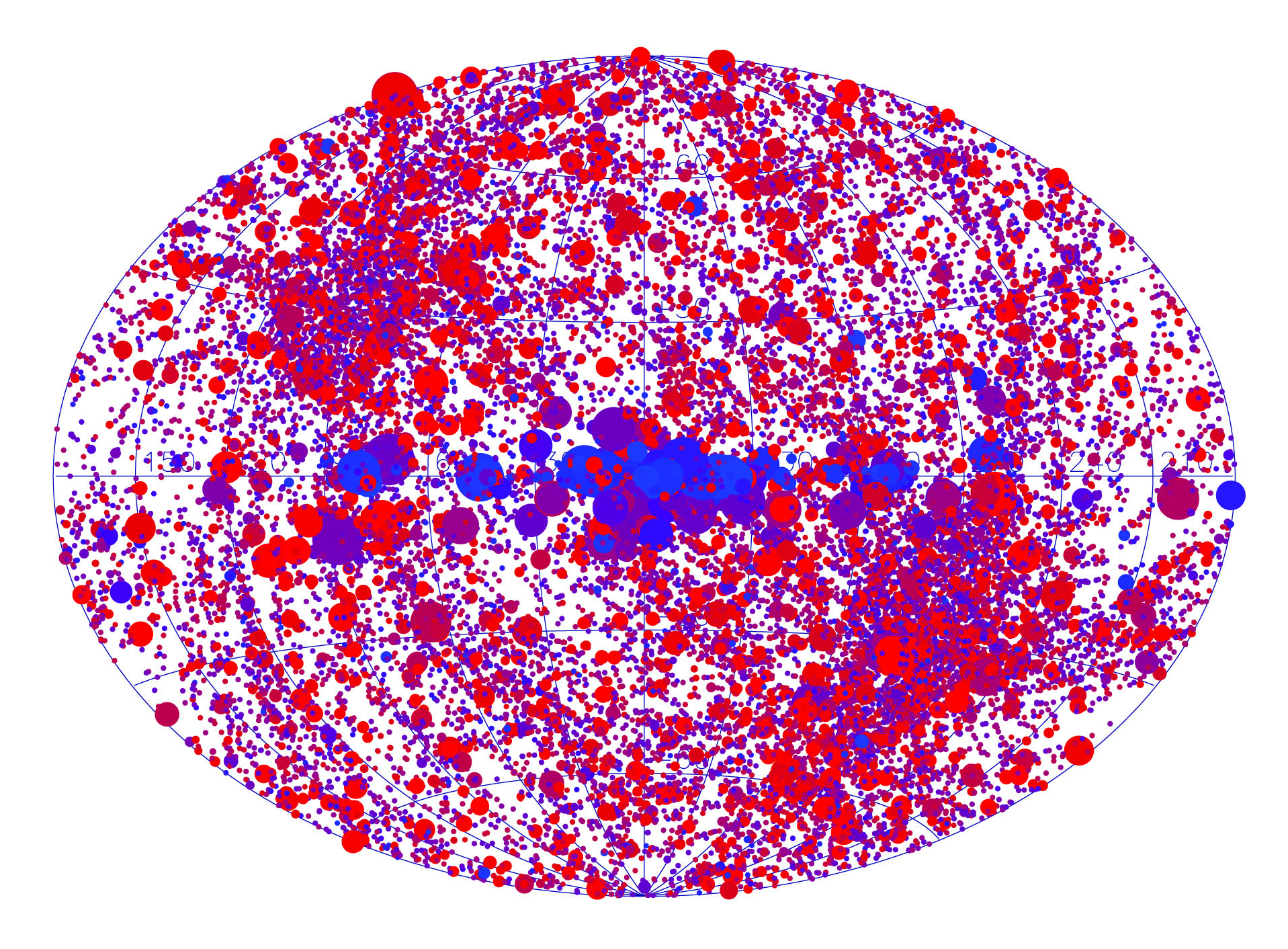The XMM-Newton X-ray telescope, carrying two Reflection Grating Spectrometers developed by SRON Netherlands Institute for Space Research, was launched in 1999. It is orbiting earth since then. Its mission is to study high-energy phenomena in the Universe, such as black holes and neutron stars. When the telescope moves between specific target it stills collects scientific data (slews). This recent map shows 30,000 sources detected during 2114 of these slews. Some of the sources have been observed up to 15 times. After correcting for overlaps between slews, 84% of the sky has been covered. Lower energy sources are shown in red while higher energy sources are blue. The size of each source is proportional to its brightness. The centre of the plot corresponds to the centre of the Milky Way. Objects above and below the centre of the plane of our Galaxy are mostly external galaxies that are emitting X-rays from their massive black holes.

Source: ESA, lightly edited by the Horizon 2020 AHEAD program outreach page and SRON Communications.


